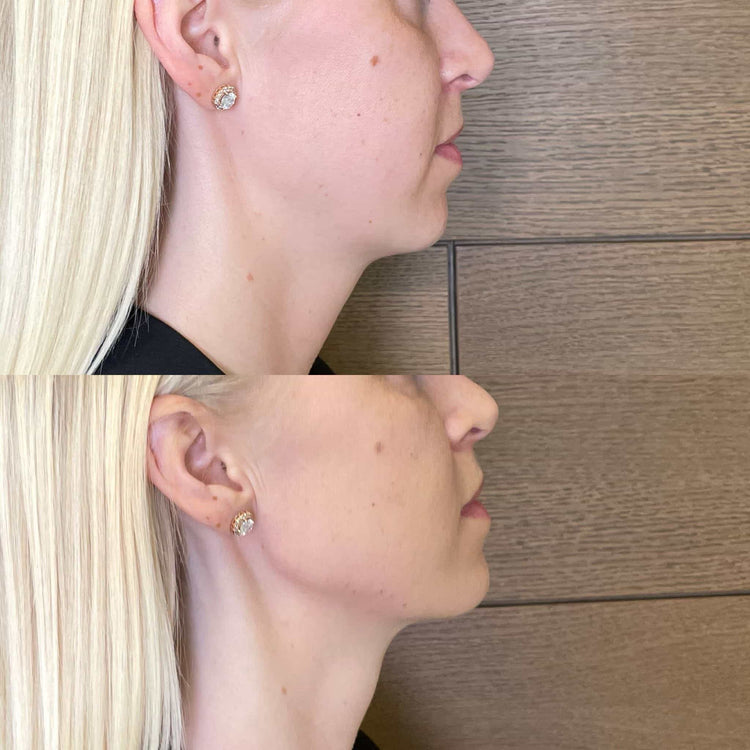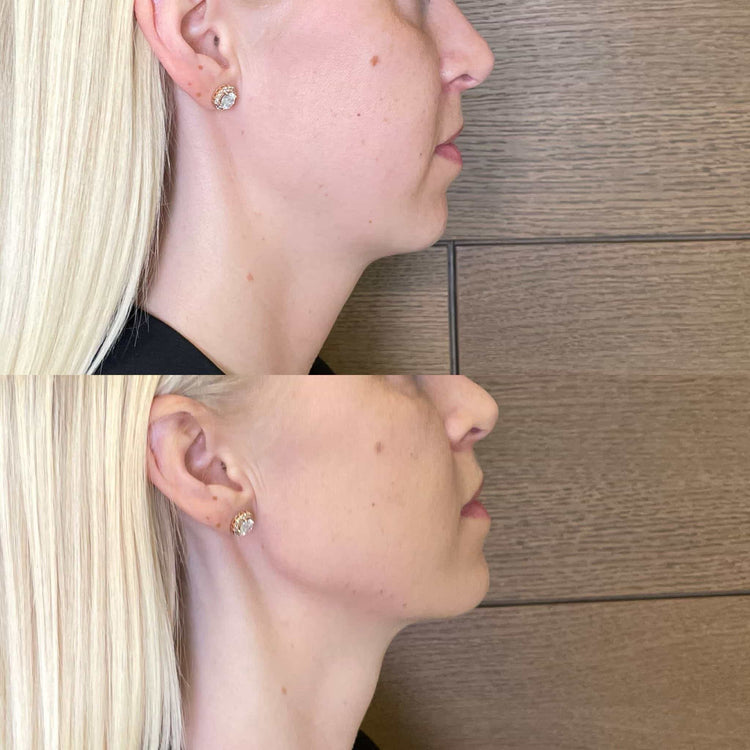How Anti-Wrinkle Injections Work
Anti-wrinkle injections are a popular non-surgical treatment for reducing the appearance of fine lines and wrinkles. These injections work by temporarily blocking the nerve signals that cause muscles to contract. When these muscles are unable to contract, the skin above them relaxes, smoothing out the wrinkles and creating a more youthful appearance.
Mechanism of Action
Anti-wrinkle injections contain a purified protein called botulinum toxin type A. This toxin works by interfering with the communication between nerves and muscles.
When injected into specific muscles, the toxin binds to receptors at the nerve endings. This binding prevents the release of acetylcholine, a neurotransmitter responsible for triggering muscle contractions. As a result, the targeted muscles become temporarily paralyzed.
With these muscles unable to contract, the overlying skin relaxes. This reduction in muscle activity diminishes the appearance of fine lines and wrinkles caused by repeated facial expressions. The effects of anti-wrinkle injections typically last for several months before gradually wearing off as the body naturally breaks down the toxin.
Blocking Nerve Signals
Anti-wrinkle injections are a popular non-surgical treatment for reducing the appearance of fine lines and wrinkles. These injections work by temporarily blocking the nerve signals that cause muscles to contract. When these muscles are unable to contract, the skin above them relaxes, smoothing out the wrinkles and creating a more youthful appearance.
Anti-wrinkle injections contain a purified protein called botulinum toxin type A. This toxin works by interfering with the communication between nerves and muscles.
When injected into specific muscles, the toxin binds to receptors at the nerve endings. This binding prevents the release of acetylcholine, a neurotransmitter responsible for triggering muscle contractions. As a result, the targeted muscles become temporarily paralyzed.
With these muscles unable to contract, the overlying skin relaxes. This reduction in muscle activity diminishes the appearance of fine lines and wrinkles caused by repeated facial expressions. The effects of anti-wrinkle injections typically last for several months before gradually wearing off as the body naturally breaks down the toxin.
Muscle Paralysis and Wrinkle Reduction
Anti-wrinkle injections are a popular non-surgical treatment for reducing the appearance of fine lines and wrinkles. These injections work by temporarily blocking the nerve signals that cause muscles to contract. When these muscles are unable to contract, the skin above them relaxes, smoothing out the wrinkles and creating a more youthful appearance.
Anti-wrinkle injections contain a purified protein called botulinum toxin type A. This toxin works by interfering with the communication between nerves and muscles.
When injected into specific muscles, the toxin binds to receptors at the nerve endings. This binding prevents the release of acetylcholine, a neurotransmitter responsible for triggering muscle contractions. As a result, the targeted muscles become temporarily paralyzed.
With these muscles unable to contract, the overlying skin relaxes. This reduction in muscle activity diminishes the appearance of fine lines and wrinkles caused by repeated facial expressions. The effects of anti-wrinkle injections typically last for several months before gradually wearing off as the body naturally breaks down the toxin.
The Injection Process
Anti-wrinkle injections are a popular non-surgical treatment for reducing the appearance of fine lines and wrinkles. These injections work by temporarily blocking the nerve signals that cause muscles to contract, smoothing out wrinkles and creating a more youthful appearance.
Preparation and Consultation
The injection process begins with a consultation where a medical professional will assess your skin and discuss your desired outcomes. They will determine the appropriate areas for treatment and explain the procedure, potential side effects, and expected results.
Prior to the injections, the area being treated will be cleansed and a topical anesthetic may be applied to minimize discomfort. The injection itself is quick and involves using a fine needle to deliver small amounts of anti-wrinkle solution into specific muscles.
After the injections, you may experience mild redness or swelling at the injection sites, which typically subsides within a few hours.
Injection Sites and Dosage
Injection sites for anti-wrinkle treatments vary depending on the targeted wrinkles. Common areas include frown lines between the eyebrows, forehead wrinkles, crow’s feet around the eyes, and smile lines around the mouth.
The dosage of anti-wrinkle injections is individualized based on factors such as the size and location of the area being treated, the desired level of wrinkle reduction, and the individual’s response to previous treatments.
Expected Results and Recovery Time
The injection process begins with a consultation where a medical professional will assess your skin and discuss your desired outcomes. They will determine the appropriate areas for treatment and explain the procedure, potential side effects, and expected results.
Prior to the injections, the area being treated will be cleansed and a topical anesthetic may be applied to minimize discomfort. The injection itself is quick and involves using a fine needle to deliver small amounts of anti-wrinkle solution into specific muscles.
After the injections, you may experience mild redness or swelling at the injection sites, which typically subsides within a few hours.
Injection sites for anti-wrinkle treatments vary depending on the targeted wrinkles. Common areas include frown lines between the eyebrows, forehead wrinkles, crow’s feet around the eyes, and smile lines around the mouth.
The dosage of anti-wrinkle injections is individualized based on factors such as the size and location of the area being treated, the desired level of wrinkle reduction, and the individual’s response to previous treatments.
Expected results from anti-wrinkle injections include a smoothing of fine lines and wrinkles in the treated areas. You may notice a more youthful appearance with reduced wrinkle depth and a smoother skin texture. The effects typically last for several months before gradually fading.
Recovery time is minimal following anti-wrinkle injections. Most individuals can resume their normal activities immediately after the treatment. It’s recommended to avoid strenuous activity or rubbing the treated areas for a few days to minimize any potential bruising or swelling.
Benefits of Anti-Wrinkle Injections for Fine Lines
Anti-wrinkle injections have become increasingly popular as a non-surgical solution for minimizing the appearance of fine lines and wrinkles.
Temporary Correction of Wrinkles
Anti-wrinkle injections are a popular non-surgical treatment for reducing the appearance of fine lines and wrinkles. These injections work by temporarily blocking the nerve signals that cause muscles to contract.
When these muscles are unable to contract, the skin above them relaxes, smoothing out the wrinkles and creating a more youthful appearance.
Anti-wrinkle injections contain a purified protein called botulinum toxin type A. This toxin works by interfering with the communication between nerves and muscles.
When injected into specific muscles, the toxin binds to receptors at the nerve endings. This binding prevents the release of acetylcholine, a neurotransmitter responsible for triggering muscle contractions. As a result, the targeted muscles become temporarily paralyzed.
With these muscles unable to contract, the overlying skin relaxes. This reduction in muscle activity diminishes the appearance of fine lines and wrinkles caused by repeated facial expressions. The effects of anti-wrinkle injections typically last for several months before gradually wearing off as the body naturally breaks down the toxin.
Minimally Invasive Procedure
Anti-wrinkle injections are a popular non-surgical treatment for reducing the appearance of fine lines and wrinkles. These injections work by temporarily blocking the nerve signals that cause muscles to contract. When these muscles are unable to contract, the skin above them relaxes, smoothing out the wrinkles and creating a more youthful appearance.
Anti-wrinkle injections contain a purified protein called botulinum toxin type A. This toxin works by interfering with the communication between nerves and muscles. When injected into specific muscles, the toxin binds to receptors at the nerve endings. This binding prevents the release of acetylcholine, a neurotransmitter responsible for triggering muscle contractions. As a result, the targeted muscles become temporarily paralyzed.
With these muscles unable to contract, the overlying skin relaxes. This reduction in muscle activity diminishes the appearance of fine lines and wrinkles caused by repeated facial expressions. The effects of anti-wrinkle injections typically last for several months before gradually wearing off as the body naturally breaks down the toxin.
Minimal Downtime
Anti-wrinkle injections offer several benefits, particularly when it comes to addressing fine lines. They provide a minimally invasive approach to achieving smoother, more youthful skin without undergoing surgery or lengthy downtime.
One of the key advantages is their ability to temporarily paralyze the muscles responsible for creating wrinkles. When these muscles are unable to contract, the overlying skin relaxes and appears smoother. This results in a noticeable reduction in the depth and prominence of fine lines.
Another benefit is the minimal downtime associated with this treatment. After the injections, most individuals can resume their daily activities immediately. There is typically little to no discomfort or bruising, allowing for a seamless return to normal routines.
Considerations and Risks
While anti-wrinkle injections offer a popular and effective way to minimize fine lines, it’s important to consider potential risks and side effects.
Potential Side Effects
Potential side effects of anti-wrinkle injections are generally mild and temporary. Some common side effects include redness, swelling, bruising, and pain at the injection site. These usually subside within a few days.
In rare cases, more serious side effects can occur, such as muscle weakness, drooping eyelids, or difficulty swallowing. It is crucial to consult with a qualified medical professional experienced in administering anti-wrinkle injections to minimize the risk of complications.
It’s important to note that individual responses to anti-wrinkle injections vary. Factors like dosage, injection site, and individual body chemistry can influence the severity and duration of side effects.

Contraindications and Precautions
Anti-wrinkle injections are generally safe when administered by a qualified medical professional. However, it’s essential to be aware of potential risks and contraindications to ensure a safe and successful treatment.
Individuals with certain medical conditions may be unsuitable for anti-wrinkle injections. These include those with muscle or nerve disorders, bleeding disorders, or allergies to botulinum toxin. Pregnancy and breastfeeding are also contraindications.
It’s crucial to inform your doctor about any medications you are taking, including over-the-counter drugs and supplements, as they may interact with the anti-wrinkle solution.
Certain antibiotics and blood thinners can increase the risk of bruising or bleeding.

Patients with a history of allergic reactions to botulinum toxin should avoid this treatment.
It’s also important to avoid receiving anti-wrinkle injections if you have an infection at the site where the injection is planned.

Always consult with a qualified medical professional to determine your suitability for anti-wrinkle injections and to discuss any potential risks or concerns.
Maintaining Results
Maintaining results from anti-wrinkle injections involves several considerations:
- Repeat treatments are typically required to sustain the smoothing effect as the toxin gradually breaks down over time.
- A healthcare professional will determine the appropriate frequency for follow-up treatments based on individual factors and desired outcomes.
- Lifestyle factors such as sun exposure, smoking, and facial expressions can influence wrinkle formation and may necessitate more frequent treatments to maintain results.
- Protecting your skin from UV damage with sunscreen and wearing protective clothing can help minimize the development of new wrinkles.
- Avoiding excessive squinting or frowning can reduce muscle activity in treated areas, helping prolong the effects of the injections.
Book your non-surgical wrinkle treatment today with Dr. Laura Geige at It’s Me & You Clinic
- What Is Russian Lip Filler - November 12, 2025
- Weed Drinks That Won’t Leave You Couch Locked - November 10, 2025
- Under Eye Rejuvenation In Frensham, Surrey - November 7, 2025
